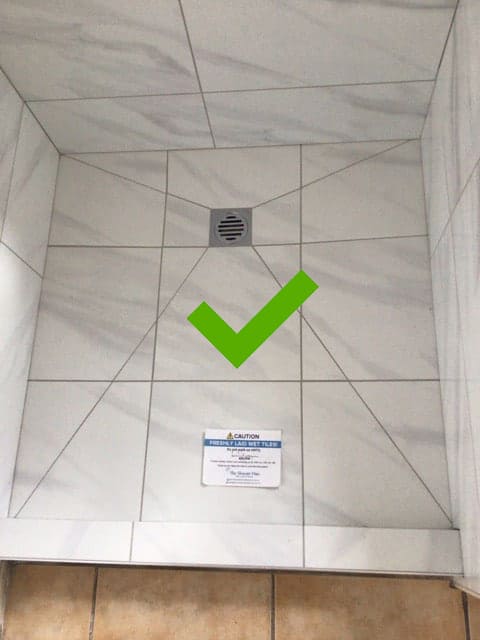The author is making a few good points relating to Preventing Water Damage in the Bathroom as a whole in this great article underneath.

The restroom is incredibly at risk for moist accumulation as well as potential water damage because of the constant use water in it. This article provides easy assessment methods to assist finding water damages threats.
The constant use of water in the shower room makes it exceptionally vulnerable for moist accumulation and potential water damage. By examining it routinely, you can reduce water related damages.
The following set of examinations is very easy to execute and also need to be done as soon as in every 3 months in order to maintain your washroom healthy and also to stop possible water problems brought on by the bath tub, the shower, pipeline joints as well as plumbing, sinks, cupboards, as well as the bathroom
Do not overlook carrying out these evaluations and be comprehensive while executing them. Remember that these basic assessments can save you a lot of money by providing very early signs for water damages
Sinks as well as Cabinets
Sinks as well as cabinets are exposed to dampness and moisture day-to-day as well as are typically neglected. Inspect regularly under the sink and also on the kitchen counter above it. Repair any kind of drip in the catch as it may suggest drain problems. Check out the sink, sluggish draining pipes might show a blocked drain. Change sink seals if they are split or loose.
Bath tub as well as Shower
The shower as well as bathtub need special focus as well as maintenance. Examine the ceramic tiles and change if broken. Make sure that there is no missing out on grout between the floor tiles. Evaluate as well as replace fractured caulking at joints where the walls meet the flooring or the bathtub. Obstructed drains pipes and pipelines problems will certainly avoid the bathtub from drying and also may show major troubles below the bath tub. Consult with a specialist immediately to avoid architectural damage. Focus on discolorations or soft areas around the bathtub wall surfaces as they may suggest an inner leak.
Plumbing
Signs for water damage are tough to spot considering that most pipes are mounted inside the walls.
Pay special interest to flooring as well as wall surfaces dampness and spots as they might indicate an unnoticeable plumbing trouble. Check moisture degrees in adjacent rooms also.
The Toilet
The bathroom is an at risk water joint. Check the water lines and search for leakages around the commode seat, in the hose, as well as under the water storage tank. If you identify any signs of wetness on the floor around the bathroom, look for leakages in the toilet edge and tank seals.
Be aware that hanging toilet dish antiperspirants increases the possibilities for obstructions.
TIPS TO PREVENT WATER DAMAGE IN THE BATHROOM
The average household uses approximately 80-100 gallons of water per person per day. For a family of 4, that's almost 2,500 gallons of water a week! The largest portion of this consumption comes from bathroom use. Flushing the toilet uses the most water, followed by taking a shower or bath. With that much water running through the home, water damage in the bathroom is bound to happen. Knowing how to spot signs of a water leak is essential to preventing long-term damage. This guide provides you with tips to reduce the impact of water damage on your bathroom.
CAUSES OF BATHROOM WATER DAMAGE
Pipe breaks are the most common cause of water damage we see in our daily jobs. The age of a pipe plays a large role in a pipe break as well as corrosion. Over time, the metal begins to break down, allowing water to escape. Frozen pipe breaks are also a concern in the winter months. Toilet overflows caused by paper products or children flushing inappropriate items. Degraded caulking around the toilet or bathtub can allow water seepage, sometimes behind the fixture, into the subfloor or walls. Condensation forms when the water in a pipe is cooler than the air temperature. Beads of water form on the exterior of the pipes, sometimes so much so that the water begins to drip and pool below. Sink or shower backups created by poor drainage. HOW TO PREVENT WATER DAMAGE IN YOUR BATHROOM
Inspect your toilet supply line for worn or frayed hoses and replace them as needed. Winterize your plumbing to prevent a frozen pipe break. Use vent fans to prevent condensation that can lead to mold growth. Routinely check and replace degraded caulking around your toilet or bathtub. Increase the temperature in your toilet tank and insulate your pipes during the warm summer months to keep condensation from forming. Use child safety locks on the toilets. Flush only toilet paper. "Flushable" wet wipes are actually not good for your plumbing system. Additionally, feminine hygiene products should not be flushed. Prevent water from escaping the tub or shower. Make sure shower curtains are in good condition. Inspect shower doors and replace the seal strip if necessary. Wipe up any water that accumulates on the floor and use bath mats. Water left to sit can cause damage to the tiles and flooring. Refrain from using bath products containing heavy oils to avoid a clogged drain.

We hope you enjoyed our article on Common Causes of Water Damage in a Bathroom. Thanks a ton for finding the time to read through our piece of content. For those who liked our blog posting plz don't forget to pass it around. I treasure reading our article about How to Repair and Prevent Bathroom Water Damage.
Or Book Technician Here